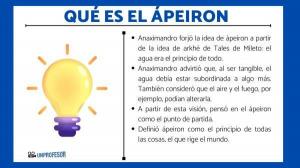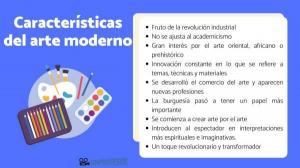5 most important WORKS of Courbet

Gustave Courbet (1819-1877) is one of the main representatives of Realism in France, greatly influencing the development of later artistic styles. An artist trained in Paris and in close contact with other artists and intellectuals with whom he developed on the basis of realism. Courbet presented several of his paintings at the Paris Salon, growing popularity of him. In his works he combined techniques and used both the brush and the knife to create uniform surfaces, but also somewhat pasty. In this lesson from unPROFESOR.com we offer you a compilation of the Courbet's most important works.
The funeral at Ornans (1849) It is one of the works that helped him to become famous. A large scene and in which shows country life, but with a vision that is not idealized. In addition, it is this painting that catapults him as the leader of the realist movement.
Also in the Musée d'Orsay, this painting break with classicism and shows the figures in total darkness and even out of focus. The painting shows us a burial, emphasizing the temporary nature of life by making a dark painting, covering the sky with clouds. A fact that some critics identified with a certain disdain for religion.

In this work you can see the non-academic treatment of the nude in Courbet. A painting of more than eight feet in length and in which two partially naked women appear without a mythological story behind the story and, above all, without idealizing them.
The painting was not well received and was criticized for the fatness of the models and not having any justification in the nude of them. It is located in the Fabre Museum in Montpellier.

One of Courbet's best known works and one of the largest it is "The artist's workshop" (1854), preserved in the Musèe d'Orsay. A painting in which Courbet represents himself painting in his studio and surrounded by a diverse group of people. A group that makes sense in isolation, not together.
Courbet made a complete description of the work, although without being clear. Thus, the artist commented how the figures located on the left represented the everyday world with poverty, wealth, misery, the exploited and those who exploit them, while on the right appear the artists and friends of the painter.
This work was created to be exhibited at the Universal Exposition of Paris in 1855, but it was rejected. Courbet organized his own exhibition at a "Pavilion of realism" which he financed himself. A pioneering and important exhibition in the history of art.
Courbet represents himself, along with a nude model and a child. In the work, in the right area, he appears reading Baudelaire, one of the leading French poets of the time and art critic and Jules Husson, who wrote under the pseudonym Champfleury and he was a close friend of Courbet and the main ideologue of realism.
Courbet's technique is to apply the palette knife painting, without giving the canvas an unfinished look.

In this play, Courbet is portrayed in his meeting with Alfred Bruyas, patron. A painting in which Courbet tries to show his appreciation for the collector, the same ones that the collector's appreciation for the painter is reflected in.
A mutual appreciation that is evident in how Courbet's gestures, with his head tilted back, showing the importance of him by pointing his beard towards the collector and with a stick of a size much higher.

We end this review of Courbet's most important works with Wave. In this painting you can see the influence of Japanese engravings, being Courbet one of the first to show that taste for oriental aesthetics.
A work that in turn greatly influenced the impressionists.



![7 most important characteristics of ANARCHISM [SUMMARY + VIDEO!]](/f/fb851f2479781cf05c80b6cb73171541.jpg?width=300&height=200)
